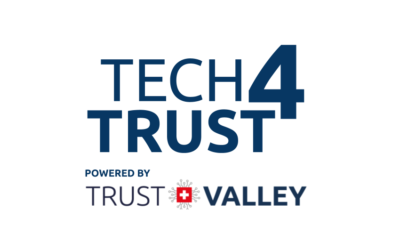Bureaucracy was known to be the plague of the USSR, but it has recently become a heavy burden for private companies. New regulations such as Sarbanes-Oxley, Dodd-Frank, GDPR, spanning all functions from HR to accounting to product labelling to vendor certifications are constantly put in place by various states where companies operate. These rules have the major effect of forcing companies to hire people whose job is to check that all operations are compliant with the set of rules in place at any given moment. These jobs add no value, they are pure cost, and their recent explosion is simply an increase in the global cost of doing business. The overall effect is either a loss of productivity or price increases for the clients to cover for these additional unwanted expenses. The only benefit is trying to avoid serious problems in the form of heavy fines or jail time for executives for non-compliance, or loss of business due to reputation damage.
Responding to bureaucratic needs used to be done in paper forms requiring many boxes to be checked, getting the required approval stamps and signatures from the required authorized persons is now partly replaced with Information Systems accessible to many in the organization. These systems record and trigger transactions and can be equipped with pre-defined software-based verification processes before a transaction can be performed. Nevertheless, this still requires a lot of non-value-adding human intervention. Worse, there is never any guarantee that these verification processes actually match current regulations. Additional difficulties stem from the fact that the information is usually stored in separate databases, each using different models for such elements as employees, vendors, clients, client credit, bank accounts, processes or products. It takes skills for a business analyst to reconcile these systems, the first ones being to figure out where the necessary is stored, how to access it and knowing who is responsible for a certain piece of data. Developing programs to match the disparate data requires time and money, the result is never guaranteed, while obsolescence at time of delivery and rigidity to change are a sure thing.
It is legitimate in our age of Artificial Intelligence to expect many of these tasks to be automated, data to be understandable by anyone and to get better, always up-to-date compliance for a lower cost.
Automating Bureaucracy: Why it is difficult
Different organs of an organization function at different rhythms. Annual planning and setting objectives for sales and production people is done annually. Invoice processing is usually done once or twice a month. Filling vacant position takes a variable time, usually months. IT projects take months to be defined and also months to be completed. Regulations are set at random times, accidents take place without forewarning…
Different organs also have different ways of prioritizing their work and all each have access to information that is limited to their specific area. An accountant will process the invoices in the order they were received and will require validation from a remote manager that may be hard to reach. A plant manager will also function in this way, perhaps with some leeway for some urgent order. A salesperson will prioritize its client visits according to the client’s potential in sales. An IT manager will organize the work of the teams according to the availability of resources and current projects.
Each of the organs requires data that is located in different places. In the case of an old-fashioned government bureaucracy, the data sat in paper folders that had to be searched, usually in different locations. You want a passport in France, you need to get a birth certificate from your birth town. To get it, you need to write a letter to the proper office, make sure that you include a return stamp, etc, which takes days if not weeks. You may also need a residence certificate that comes from your current residence town. You also need to write to get it. In any case, the order in which each local administration will process your request has nothing to do with how urgent it is for you to get a passport. Now, if there is any mismatch, such as a typo, in any of the required document, and you may be facing a multi-year complex procedure to get it fixed.
In the case of a compliance officer in a company, the situation is quite similar: in order for a contract or transaction to be approved, it needs to go through the compliance officer. The latter needs to review the said transaction, in the order that is convenient to him, then find all the related pieces of information that will let him take his decision based on current business rules and regulations. That information may be found in paper folders in another building, in one or many databases, or in excel files maintained by some unknown employee. So just to collect all the information required to approve a transaction may be very lengthy. It is clearly super-inefficient and unacceptable in the information age.
Unfortunately, it is almost impossible to perfectly unify all information systems in a company. Different software are used, they have been parametrized according to different needs by different people at different times, so there is no unity. A client may be designated in system a by “CLIENT”, by “U_CLIENT” in system b and “Customer” or “Client” in system C. Similar Contracts for different types of clients may also sit in different databases and be characterized differently. So, the officer needs to develop some heuristics to find the information and to match it to the tasks at hand. This implicit knowledge is quite painful to formalize. Doing so would require defining a very complex and expensive IT project involving all departments, get them to agree on a global definition of business items and terms. That could take months to complete, so companies usually function with heterogeneous IT systems and count on smart employees to compensate for the defects, which should not be their primary job.
In all companies, data do not sit in a single database and are not accessed by a single application such as SAP. Typically, there will be a system for accounting using its own database, another one for HR, another one for shop floor planning, another one for CRM, etc… It is therefore almost impossible to measure the impact of any change in one of these systems to all the others. If suddenly, there is a management decision to categorization of items in one system, there is no way to automatically enforce the change in other systems related to the same items. The only possibility is for a business or IT analyst to extract the data from all concerned systems and find a way to implement the changes everywhere necessary. This is lengthy, matching is usually not really possible, and there is no guarantee that the result will be what is expected. Until all mismatches have been fixed, there is a risk that some non-compliant transactions take place.
Consequently, each organ has no view on how its actions or lack thereof impacts the rest of the company. An invoice paid too late because the accountant had too much work on that day may result in a major contract being lost. Using a specific ingredient that just came in from a supplier in the production may result in having to throw away the whole production batch and lose sales in a distant place, etc… Top management certainly has no time to go through all the data from the whole company. If it insisted on being involved for all transactions, just as in the USSR, then everything would take even longer and lead to more inefficiencies.
Most actions in a company, at any level, require collaborations with other parties. And coordinating activities, identifying the right people, the right information, accessing it, bringing a team in a room for a discussion, all take time that it is hard to account for, yet consume a lot of non-value adding employee time. These delays cause friction in the system and many inefficiencies, some with a possible major impact. Even at the age of computers, people still have full agendas, IT systems may change and getting access take longer than desired, or people can be sick.
In summary, the way work is organized cannot be better optimized with standard tools, for the following reasons:
- Different rhythms for different organs
- Different prioritization rules for different organs. Never by global enterprise value.
- Partial view of the information by each organ.
- Lack of global visibility of the impact of each impact
- Delay between stages required to complete a transaction
Nothing can be done about that: it would make no sense for a salesperson to control the production planning, nor for top management to control every minute action. Some processes take a long time that cannot be processed. Workdays only have so many hours, etc… So we have grown accustomed to the inefficiencies that result. And it is usually the slowest element in the chain that control the overall rhythm. The longer the slowest processes are, the less reactive to change the company is.
When are all of these organs in sync? Almost never, because of this. So the system always works in a less-than-optimal fashion.
Validations by another party will always be necessary, as well as defining procedures, setting rules and respecting regulations. All of these tasks require human intervention. On the other hand, all that makes them possible: coordination, identification of data sources and people, access, messaging, etc… can be automated and the proper messages generated automatically. With proper and timely access to all the relevant data, an intelligent system can also be expected to classify everything by value or global impact, rather than to rely on every organ’s prioritization habits.
It would also be useful to count on that system to simulate the impact on future operations of changes in regulation or management rules.
Enter Data Excellence Management Systems
DEMS is a software developed by the Geneva based company Global Data Excellence. It is based on Artificial Intelligence, as part of a global framework called Data Excellence Science, which enables reasoning over natural language sentences and dialogue between humans and machines, or between machines.
It is quite useful to automate all the bureaucratic logistics in any organization. It is used by multi-national companies to plan their supply chains months in advance, by governments to identify potential terrorists and by banks and insurance companies to ensure compliance of their current transactions.
DEMS’s artificial intelligence is not of the kind usually talked about, such as machine learning. In Machine Learning, the idea is to find structured patterns in past data. Such an approach is quite useful in trying to predict consumption of hamburgers next Friday in a given McDonalds, or the replenishment needs of a yogurt shelf in a supermarket. However, it has severe limitations: its predictive abilities rely on the strong assumption that the future will be like the past. It also needs lots of past similar data to build its model. And finally, its results are not directly incorporated in the data processing of the company dealing with operations. There is always a need for a specialized analyst to analyse the data, and possibly to make recommendations to a business function. This business function may in turn ask IT to implement some business rules in their systems, which takes time and hence lack of synchronicity between the elements of the chain: the model needs to be validated with forward-looking experiments, and IT projects are by definition lengthy. The link is never direct between the raw data and the operations.
Now what happens when the world changes? Any model based on past data is largely useless in case of new changes, by definition. How is productivity impacted if work hours are reduced by x hours per week? If paid paternal leave is now offered to all male employees? How is a bank business affected if new sanctions target a certain country? Answering this type of question requires the following:
- A clear view of all data impacted by the new “situation” or rule
- A way to measure that expected impact
- A way to take smart decisions on current and future transactions, according to the new situation.
DEMS functions like an active government, with several branches that can work in collaboration:
- A legislative branch, which sets rules, internal and external such as regulations
- A judicial branch, which checks if rules have been and are being followed in the transactions
- An executive branch which takes actions, e.g., conduct transactions, compliant with the rules and resources available.
- A bonus feature: a simulator of the future according to any set of rules.
Concretely, DEMS functions as follows:
- Rules are entered in DEMS in natural language. Rules can be of different nature:
- Internal, such as “Every employee must receive x days of continuous training per year”, “Every invoice must be linked to a Purchase Order”, “Every expense above X$ must be approved by a VP”, “No supplier should employ child labor”, “Each client must be vetted by an external credit appraiser”, “The credit limit of each client must not exceed X% of their annual turnover”, “The company is not allowed to invite clients to play golf”, etc…
- External: those are the regulations, such as Dodd-Frank, Sarbanes Oxley or GDPR. These will be translated in an exhaustive list of rules, such as “Every record of personal information about anyone requires a signed consent form”, or “Planned revenue not yet invoiced cannot be counted in annual turnover”, “The list of ingredients, with their classification according to standard X, must be clearly displayed on the packaging”, “No products of type X can be sold to country A”, “Engineers working on project X must have a military authorization”, etc…
- Process rules: those will specify the steps and timing aspects of a complex sequence, starting from the end and working backwards. Take the baking of a cake. Here could be a typical coding of the sequence:
- Cake must be ready in 6 hours (20:00)
- Cooking time requires 1.5 hours (18:30)
iii. Preparation before cooking takes .5 hours (18:00)
- Kitchen and cook must be available at 18:00
- All ingredients must be present at 18:00: flour, sugar, eggs, etc…
- All ingredients must be before their expiration date
vii. Getting missing ingredients when necessary takes two hours (16:00)
- DEMS is connected to the data sources
- Data related to the rules are stored in usually different data sources: databases, ERP, excel files, etc…
- A dictionary of the terms and what they represent in the context of that particular context (the company or the project) is extracted automatically and validated by a human expert. This is the key part where Artificial Intelligence is used: it knows how to find in all the data sources the Business Terms such as Client, Supplier, Employee, Invoice, Payment, Contract, Transaction, Ingredients, etc… and all the different ways in which such concepts are coded and linked in all the data sources. It is thanks to this intelligent, context-dependent dictionary that the rules can be written in natural language, using the terms so discovered. DEMS contains a natural language processing engine that can make sense of non-specific terms such as “Each …”, “No …”, “Must”, “Cannot”, etc… and therefore “understand” what the sentences representing the rules as in Point 1 above mean. It also knows how to figure out if any transaction
- Roles are attributed
- DEMS only reads data stored in the linked sources. Each element necessary to complete a transaction or follow a rule must be stored in these data sources.
- The user attributes accountability and responsibility of each data element to a particular role. In case a new person replaces someone as responsible for Data X, DEMS will know automatically. Typically, a sales representative could be responsible for maintaining client data in the CRM. A designated accountant could be designated to maintain analytical accounting categories. A senior finance person could be designated to validate certain transactions, etc…
- DEMS then provides dashboards with the following characteristics
- Every user gets a performance indication of its general compliance
- The possibility to drill down to individual non-compliant transactions, indicating which rule is violated.
- A numerical value, monetary or other, is associated to each non-compliant transaction. Hence the possibility to prioritize according to the said value, and not to some criterion isolated from the rest of the collaborative network
- A list of things to do, and who must do it. For instance, the dashboard could tell you that a signature is missing somewhere, so the user can send a reminder to the person in charge.
- Each role gets a customized dashboard, corresponding to his role in the organization, and linked to all the appropriate data.
- DEMS can simulate the future
- Today, there are invoices that need to be paid next week. Do they all have the proper validations, etc…? Can the necessary steps be completed according to rules and constraints?
- DEMS will give a full set of steps to be taken for future transactions to be compliant with all rules. If not all can be completed, one can concentrate on the ones with highest value
- DEMS allows the simulation of the impact of new rules. Say a company wants to reduce the number of suppliers or clients from a certain part of the world. DEMS will automatically give the value of the impact of all transactions that are currently planned to imply such suppliers or clients
- The company wants to increase its business in a country by x%, with budget Y$. Given the detailed steps to increase business in that country, such as the sales quota expected by a sales representative, the time and money it takes to onboard and compensate new sales representatives, the number of visits it takes on average to catch a new client, the regulatory environment of that country , DEMS will indicate what can be achieved with available resources
These functionalities are very different from what Machine Learning techniques are proposing. DEMS does automatize all the logistics of bureaucracy: no more time spent looking for the data and coordinating people and prioritizing their tasks. Every user anywhere in the hierarchy gets his ordered and exhaustive task list for the day. It lets executive, business experts and legal officers concentrate on their higher skills, which are to invent and set the rules to improve their overall productivity. It lets them play with possible scenarios, measure the impact of possible rules such as “Make x% more phone calls per day” or “Give paid paternity leave to male employees”. They can measure exhaustively the impact of letting go or reassigning certain employees to other roles. It also guarantees a flawless, fully compliant execution of current and future transactions.
Global Data Excellence News
Forget KPIs – In 2022 You Need to Embrace KVIs
It’s a new year and a time for chasing new goals ! If you’re like most organizations you’ve got fresh Q1 Key Performance Indicators (KPIs) to chase,...
Data Fabric and Decision Intelligence on Gartner’s 2022 Top Strategic Technology Trends
What are the top trends that are going to shape digital business in 2022? That’s the questions that analyst David Groombridge set out to answer when...
Global Data Excellence is part of the Tech4Trust accelerator program !
Tech4Trust Accelerator Program On Monday October 4th 2021, Global Data Excellence has been selected among 300 startups to participate to the...

Global Data Excellence (GDE)
Route de la Galaise 34
CH - 1228 Plan-les-Ouates


© 2024 Global Data Excellence | All Rights reserved | DEMS Support Platform | Website realised by Swiss House of Brands



